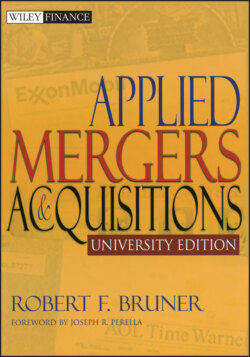Читать книгу Applied Mergers and Acquisitions - Robert F. Bruner - Страница 37
Find and Reflect on Your Dilemmas
ОглавлениеThe showstopper for many business professionals is that ethical dilemmas are not readily given to structured analysis, as one values a firm or balances the books. Nevertheless, one can harness the questions raised in the field of ethics to lend some rigor to one’s reflections. Laura Nash (1981) abstracted a list of 12 questions on which the thoughtful practitioner might reflect in grappling with an ethical dilemma:
1 Have I defined the problem correctly and accurately?
2 If I stood on the other side of the problem, how would I define it?
3 What are the origins of this dilemma?
4 To whom and what am I loyal, as a person and as a member of a firm?
5 What is my intention in making this decision?
6 How do the likely results compare with my intention?
7 Can my decision injure anyone? How?
8 Can I engage the affected parties in my decision before I decide or take action?
9 Am I confident that my decision will be valid over the long-term future?
10 If my boss, the CEO, the directors, my family, or community learned about this decision, would I have misgivings?
11 What signals (or symbols) might my decision convey, if my decision were understood correctly? If misunderstood?
12 Are there exceptions to my position, “special circumstances” under which I might make an alternative decision?
In addition to analysis, you can bring moral imagination to the reflection on ethical dilemmas. Mark Johnson defines moral imagination as “an ability to imaginatively discern various possibilities for acting within a given situation and to envision the potential help and harm that are likely to result from a given action.”19 Patricia Werhane lists four qualities necessary for moral imagination: “(1) a disengagement from an individual’s role, particular situation, or context; (2) an awareness of the kind of scheme one has adopted or that is operating in a particular kind of context; (3) a creative vision of new possibilities—fresh ways to frame experiences and new solutions to present dilemmas; and (4) an evaluation of the old context, scope or range of conceptual schemes at work, and new possibilities.”20
